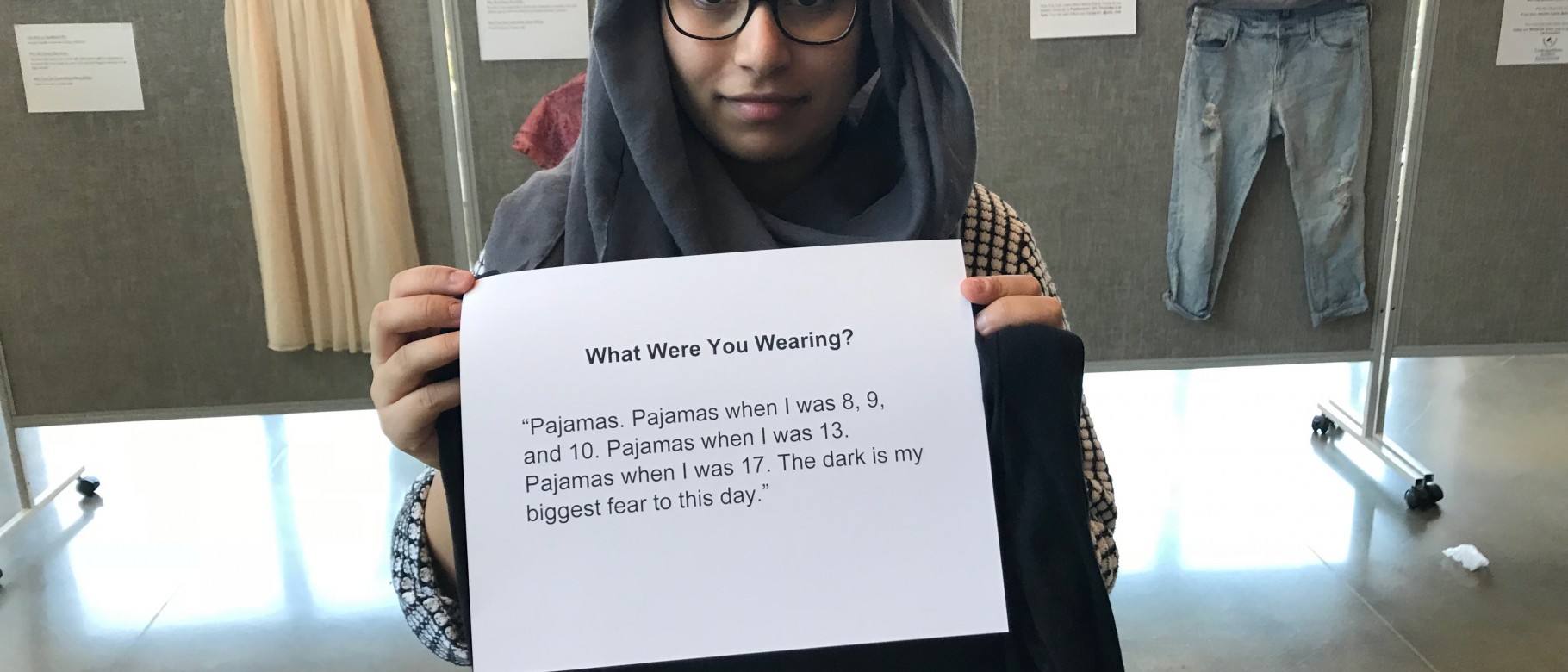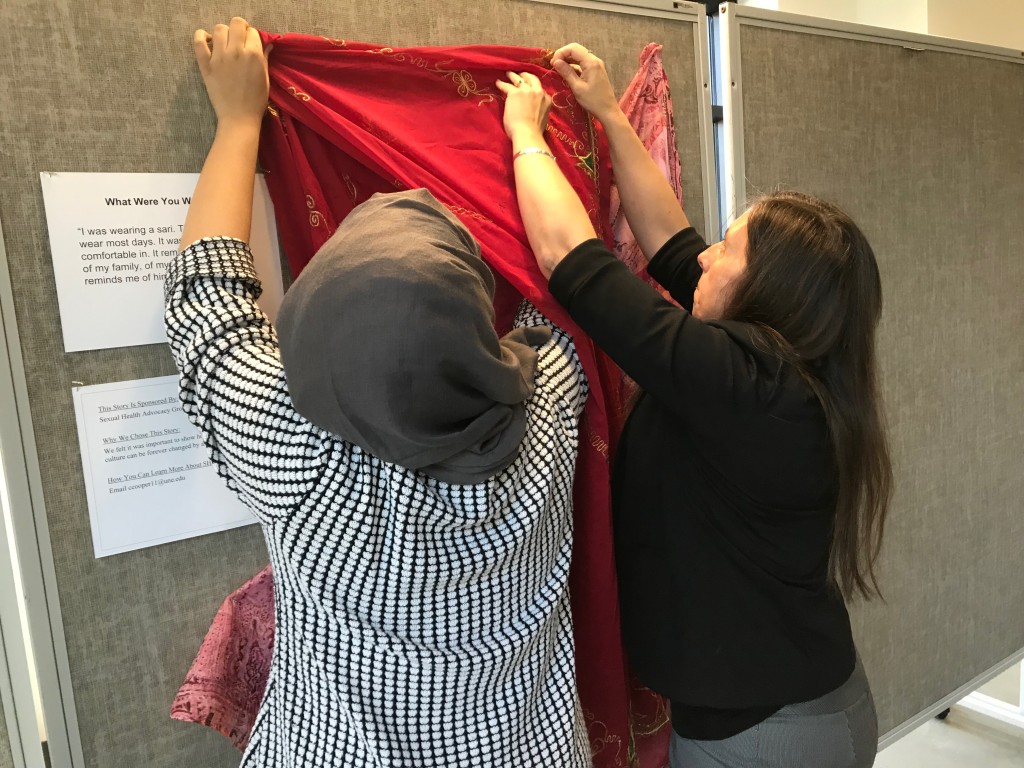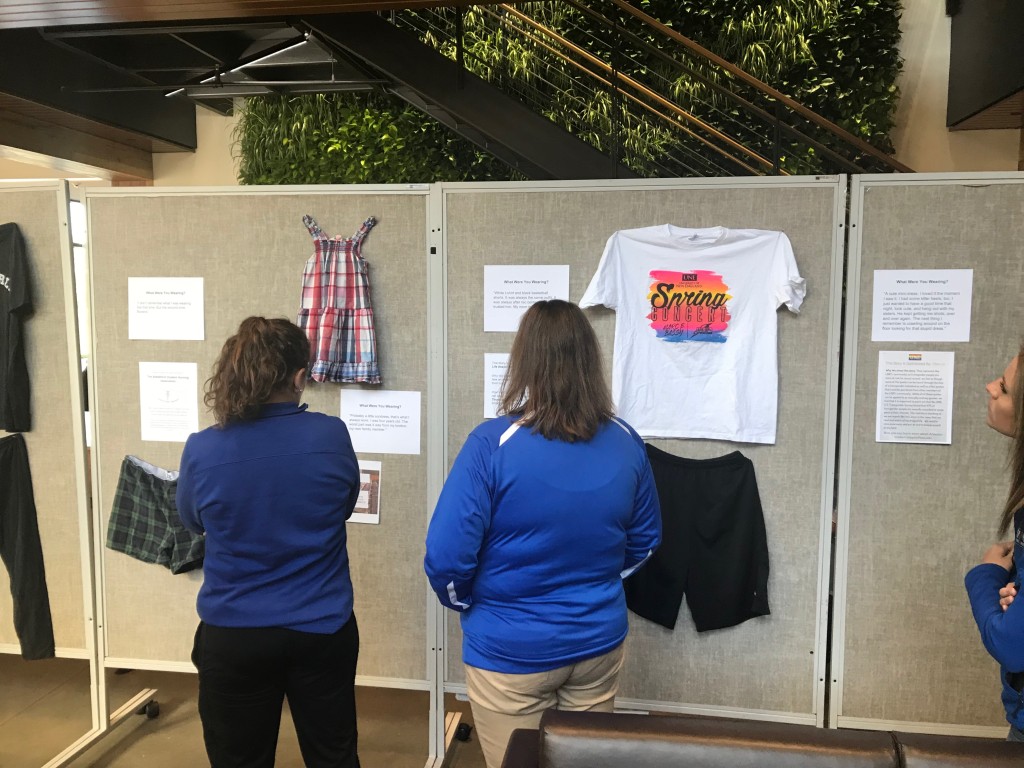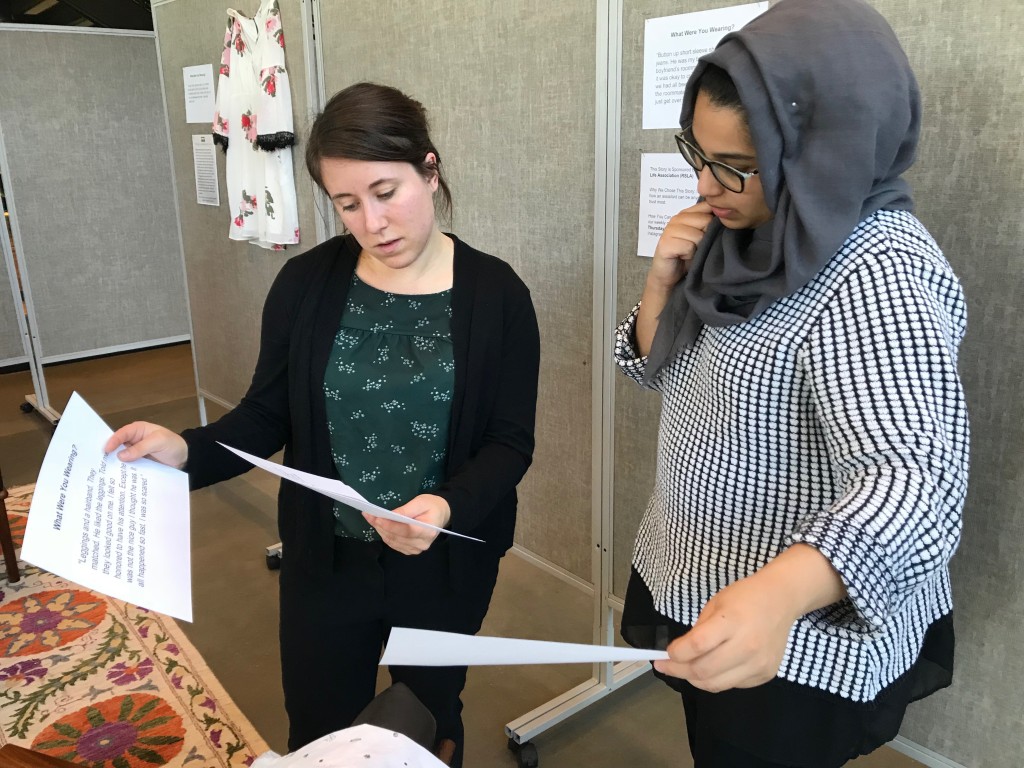Survivors answer the question ‘What were you wearing?’ in powerful exhibit

A powerful exhibit was recently on display at the Ripich Commons on the Biddeford Campus and in the atrium of Innovation Hall on the Portland Campus.
What Were You Wearing? tells the stories of survivors of sexual assault and depicts the clothes they were wearing when they were assaulted.
The goal of the exhibit is to dispel the myth that victims are attacked because of their clothing.
“I really hope that students gain some understanding that sexual assault is an issue on college campuses, but more than that, what you are wearing isn't significant at all,” said Brittany Swett, UNE’s Title IX investigator and prevention specialist.
The installation was created at the University of Arkansas in 2013 to address the myth. News of it went viral on social media in 2017 after it was showcased at the University of Kansas.
Advocates for victims of sexual assault say the question, “What were you wearing?” is frequently asked of most survivors.
Creators of the installation want participants to understand that assault is never about one’s clothing. They seek to place the responsibility of an assault on the perpetrator, releasing the victim from any feeling of blame.
“It's not about what they were wearing,” explained Angela Shambarger, UNE's Title IX coordinator. “I think it’s a really unique and powerful way to look at rape mythology and to show that survivors come from all walks of life.”
The true stories for the exhibit were donated by survivors and used with their permission. The items of clothing used in the exhibit are recreations of those referenced in the stories.
Shambarger and Swett sought student involvement in the project, so they reached out to UNE clubs, groups and organizations, asking them to choose specific displays that resonated with members of their groups and to provide a quote about why those displays were selected.
Hajra Chand (Medical Biology, ’19) represents the Muslim Students Association and the United Multicultural Club.
“I think we all know someone who has been sexually assaulted or raped,” she stated. “It can be a very emotional thing to experience in person and see the true depth of how much it happens.”
Chand says it’s an important issue on which to shed light.
“I think it's significant for people to see that there are these preconceived notions about specific attire,” she said. “Instead of asking ‘What were you wearing?’ we should be asking ‘Why is this happening, and how can we stop this as a society?”
Requests to host the exhibit have come in from 50 countries on five continents.
The exhibit at the Ripich Commons was on display through October 26. The exhibit at Innovation Hall was up through October 29.


